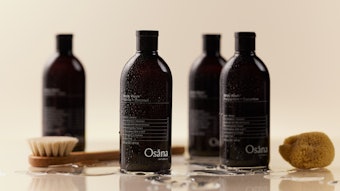The days when one-channel strategies for hair care products, such as selling solely through major salon chains such as Regis, are over as consumers shop for and expect salon brands at Target, Walmart and even drug store chains such as Rite Aid. Brand names such as Paul Sebastian and Paul Mitchell have been sold at retail stores for 10 years or more, effectively ending that which was once taboo: “high-end,” professional hair care products retailed outside salons.
Considering the Hair Care Market As a Whole
Global retail sales of hair care products increased by 5% in 2011 to reach $73.7 billion, according Euromonitor International's The Parallel Worlds of Hair Care in the July/August issue of GCI. L’Oréal, with sales of €20.34 billion in 2011, remains a trailblazer in professional and mass market products—with 21.5% of its 2011 sales attributed to hair care segment on gains of 2.5% and 4.5% for professional and mass market products, respectively. Consumers’ preference for “high-value added products” such as Elseve Nutri-Gloss hair care was among the driving factors of that performance.
That preference still holds in 2012, and has also been demonstrated in the performance of L’Oréal's Kerastase and Redken luxury/professional brands. The price points of these shampoos and conditioners range from approximately $15 to about $70. That’s a big difference from Garnier Fructis, retailed in mass chains at under $10 by the same parent company as those previously mentioned.
The overall performance, as well as the healthy gains for both professional and mass, demonstrates consumers often purchase with the best of both worlds in mind, thinking quality and cost. Advertising promotions that consider such spending behavior are likely to benefit brands as consumers continue to make buying decisions based on brand and price points. And because consumers are image conscious and on a budget, access to affordable quality speaks volumes to the buying psyche.
Further, changing consumer shopping habits are contributing to the fading notion of product exclusivity in a given channel. And with smart hair care brands reinforcing the pampering experience of the product, brands formerly retailed solely through professional channels are better able to capture sales beyond the salon/spa experience—as the product itself becomes a small luxury.
Retailing through multiple channels also makes sense when playing the numbers game. Regis salons serve an estimated 160 million customers annually, according to the International Franchise Association, while Walmart serves 200 million customers weekly—with, according to its 2012 annual report, $400 billion in sales. The potential for hair care brands expanding beyond salon sales and specialty chains is quite apparent.
Taneisa Grier is a science instructor in post-secondary education as well as a statistical analyst in labor market information. When she isn’t reading and writing or crunching numbers, she’s working on an upstart cosmetic company. [email protected]










